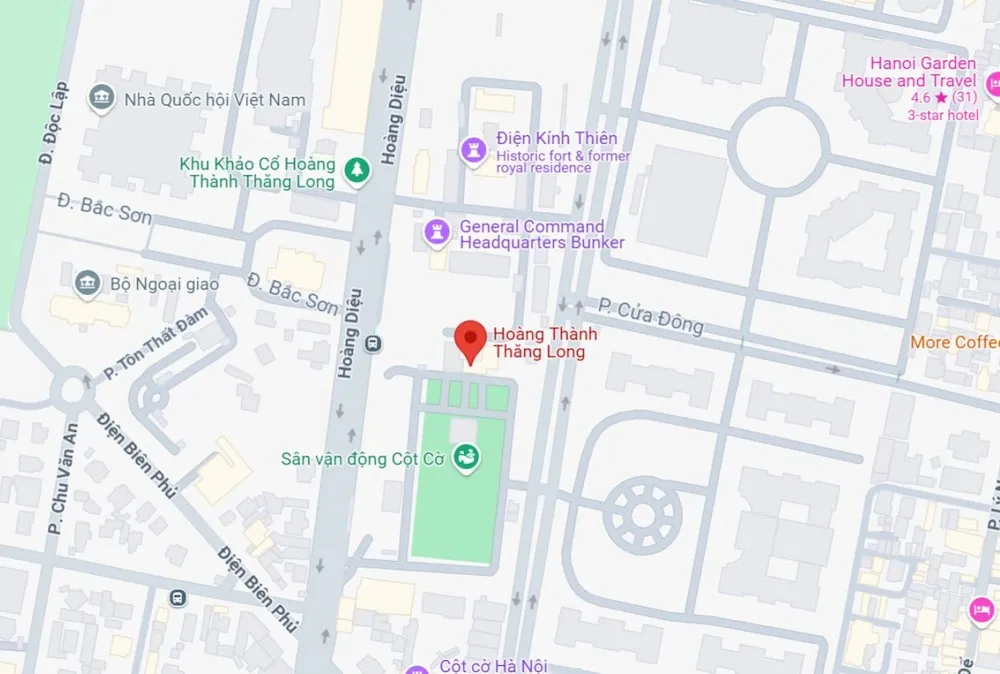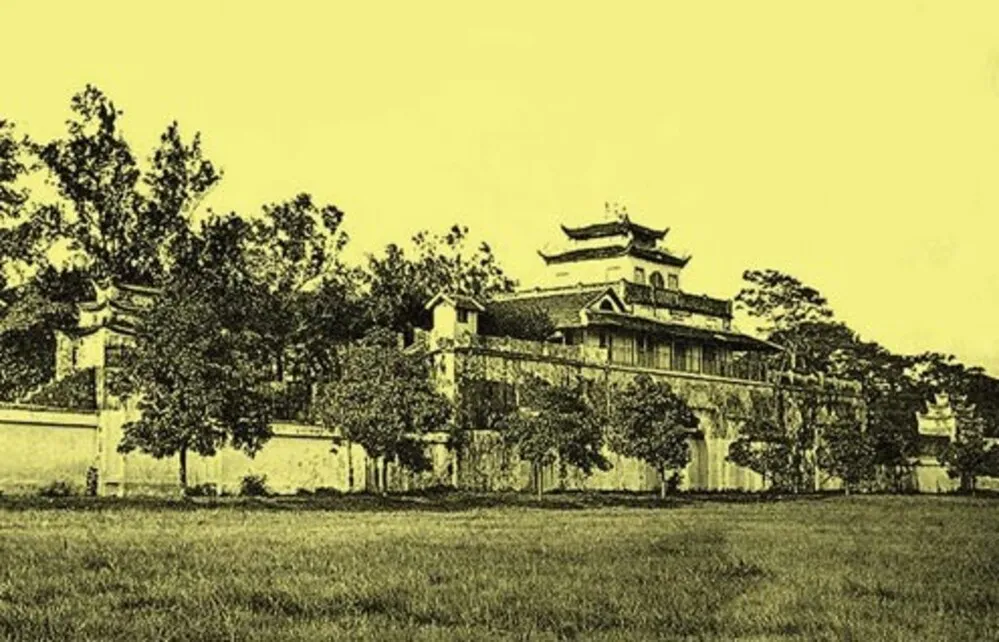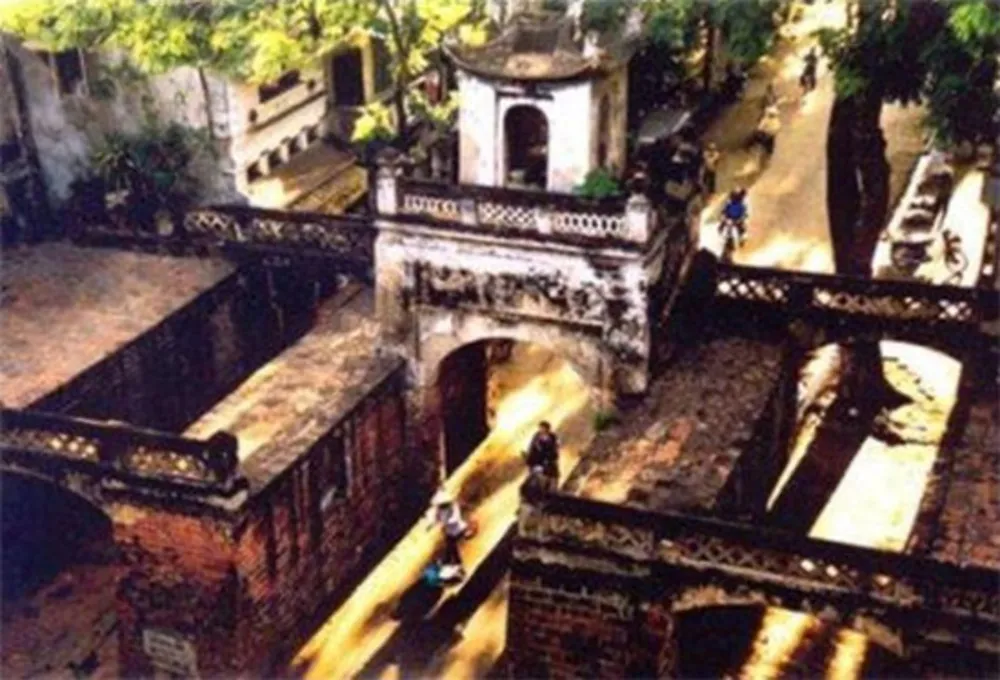The Imperial Citadel of Thang Long, a UNESCO World Heritage Site, is a must-visit destination in Hanoi. With over 1,000 years of heroic history, this site not only served as the political and cultural hub for many dynasties in Vietnam but also stands as a living witness to the nation’s historical ups and downs. It preserves invaluable architectural, archaeological, and intangible cultural values. This article will serve as a comprehensive guide to help you prepare for an enriching and meaningful experience touring the Imperial Citadel of Thang Long.
Introduction to the Imperial Citadel of Thang Long: A UNESCO World Heritage Site
Located at 19C Hoang Dieu Street, Ba Dinh District, Hanoi, the Imperial Citadel of Thang Long is intricately linked to the thousand-year history of Thang Long – Hanoi. Constructed during the Ly Dynasty (11th century), it served as the power center for various dynasties, including Ly, Tran, Le, and Nguyen. Spanning an area of approximately 18.395 hectares, the site includes major archaeological areas such as 18 Hoang Dieu Excavation Site, Doan Mon Gate, Hau Lau, Flag Tower, and underground relics. Archaeological discoveries at this site provide a vivid historical narrative of the Citadel’s evolution. In 2010, the Imperial Citadel of Thang Long was recognized by UNESCO as a World Cultural Heritage, affirming its significance and value to humanity.

The Formation and Development of the Imperial Citadel of Thang Long: A Witness to Heroic History
The history of the Imperial Citadel of Thang Long is intricately tied to the changing fortunes of Thang Long – Hanoi. In 1010, King Ly Thai To moved the capital to Dai La, renamed it Thang Long, and turned the Citadel into the center of Vietnam’s politics, military, and culture. The Citadel was designed with a “three-layer fortress” structure: the Outer Citadel (Kinh Thanh), the Imperial City (Hoang Thanh), and the Forbidden Citadel (Cam Thanh).
The Thang Long Citadel Through Different Dynasties:
- Ly Dynasty (1010–1225): Expansion and construction of palaces like Dien Kinh Thien, Dien Thien An, and Dien Can Nguyen, with elaborate fortifications and deep moats protecting the capital.

- Tran Dynasty (1225–1400): Restoration and upgrades were made, focusing on fortifications to defend against invasions from the north.

- Ho Dynasty (1400–1407): Minimal changes during this period.
- Ming Occupation (1407–1427): The Citadel suffered substantial destruction due to war.

- Early Le Dynasty (1428–1527): Dien Kinh Thien was rebuilt, reviving the Citadel with remarkable architecture and cultural significance.
- Mac and Later Le Dynasties (1527–1788): The Citadel underwent cycles of destruction and rebuilding due to internal conflicts.

- Tay Son Dynasty (1788–1802): Many structures fell into ruin.
- Nguyen Dynasty (1802–1945): With the capital relocated to Hue, the Citadel became Hanoi’s regional fortress.

- Modern Era: Used as a military headquarters before being transformed into a historical site and archaeological site.
The Historical and Cultural Significance of the Imperial Citadel of Thang Long: A Millennial Legacy
The Imperial Citadel of Thang Long symbolizes Vietnam’s history and culture. It serves as:
- A political power hub: The central seat of governance for feudal dynasties across centuries.
- A treasure trove of tangible and intangible heritage: Housing architectural relics, archaeological artifacts, and traditional cultural elements.
- A witness to the nation’s history: Bearing testimony to victories, events, and challenges throughout Vietnam’s past.
- A symbol of resilience and independence: Reflecting the indomitable will and pride of the Vietnamese people.
- A UNESCO World Heritage Site: Recognized globally for its cultural significance in 2010.

Must-Visit Destinations Within the Citadel: Discovering Small Corners of History
A visit to the Imperial Citadel will not be complete without exploring these famous landmarks:
- Doan Mon Gate: The main entrance to the citadel’s core, a symbol of royal authority.
- Dien Kinh Thien: Remnants of the central palace where rulers held court.
- Hanoi Flag Tower: A historical and cultural beacon, witnessing centuries of history.
- Hau Lau: Residence of concubines and princesses.
- Cua Bac (North Gate): A relic of the battle against French colonists.
- 18 Hoang Dieu Archaeological Site: Uncovering significant archaeological remains from different historical periods.
(Include illustrative images for each site as in the original article.)
Practical Tips for Touring the Imperial Citadel: A Comprehensive Guide
For an unforgettable experience at the Imperial Citadel of Thang Long, consider:
- Renting traditional Ao Dai attire or historical costumes: Create memorable photos with authentic charm.
- Joining guided tours: Gain deeper insights into the history and culture of each location.
- Independent tours with audio guides: Explore freely while learning curated details.
- Visiting exhibitions and displays: Discover valuable artifacts and historical documents.
- Exploring traditional crafts and purchasing souvenirs: Bring home a piece of history.
Directions, Ticket Details, and Important Notes:
- Getting there: Accessible via personal vehicles, public transportation, or ride-hailing services.
- Tickets: Purchase tickets at the entrance; fees may vary depending on the time of visit.
- Ideal visiting time: Spring or autumn for favorable weather.
- Tips: Wear respectful clothing, comfortable shoes, and bring water while maintaining cleanliness at the site.
Conclusion: A Journey into Vietnam’s History and Culture
Exploring the Imperial Citadel of Thang Long is not just a typical sightseeing experience—it’s an enriching journey through history, culture, and the enduring spirit of the Vietnamese people. Take the time to immerse yourself in this heritage site that epitomizes historical greatness and cultural significance. Begin planning your visit today!